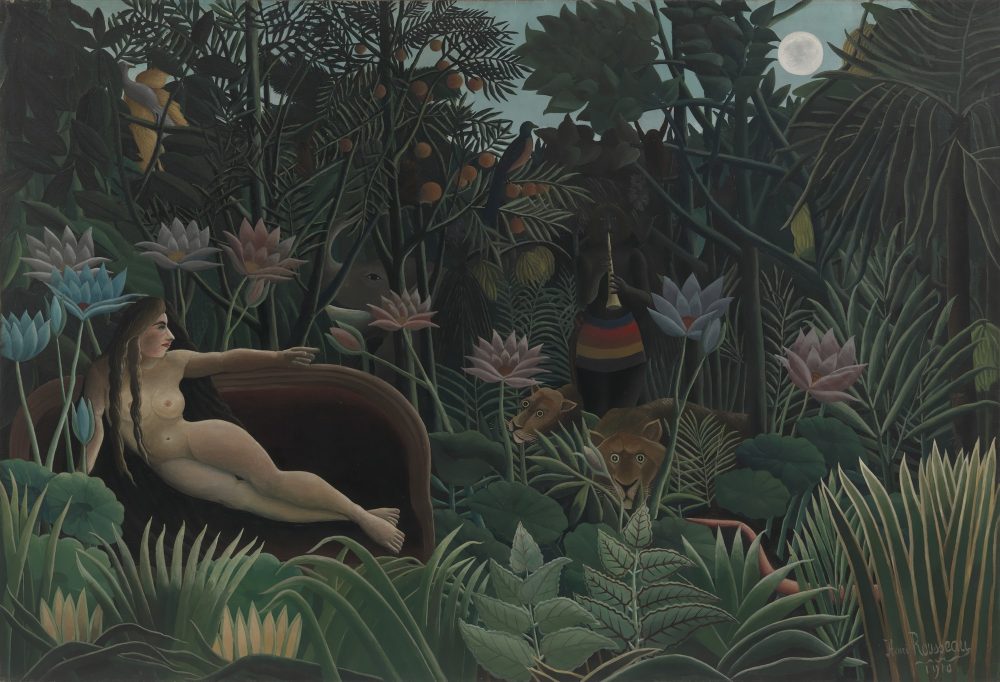Henri Rousseau
Fundamental Paintings to Understand the History of Painting
We could make this publication thanks to small donations. How is 3 minutos de arte supported?
The Dream (1910). Henri Rousseau
Oil on canvas. 204 cm x 298 cm
Moma. New York. United States
The naif art of Henri Rousseau —a customs officer without academic formation, self-educated— was criticized in his time by the expert scholars, but very valued by who were transforming the history of painting forever. This is due to the simplicity, expressive force and poetry that he achieves with his apparent “innocence.”
His work in general, and this painting in particular, has all that fascinates the innovators: the exotic, the primitive, the spontaneity and the simplicity of what is “childish.”
He was also praised by his followers for the complex and expressive color that, despite his lack of academic education, he handled with mastership.
Rousseau did not pay attention to perspective and proportions. In his works, lights and shadows do not provide depth, and so his figures turn out to be flat.
His drawing is simple. The compositions are sophisticated and of great romantic vitality.
His universe results exotic, oneiric —as part of a dream— fantastic, as we can observe in this painting. To sum up: a wonderful combination that makes all the unreality of his painting sounds sincere, uncontaminated.
At that time art stopped “imitating” nature to search for truth within the artist, Rousseau did not imitate nature or any artist. He was a painter that was not skillful, but he was sincere and knew how to create beauty with humbleness.
Recommended links:
You can also find more material using the search engine.




0 Comments